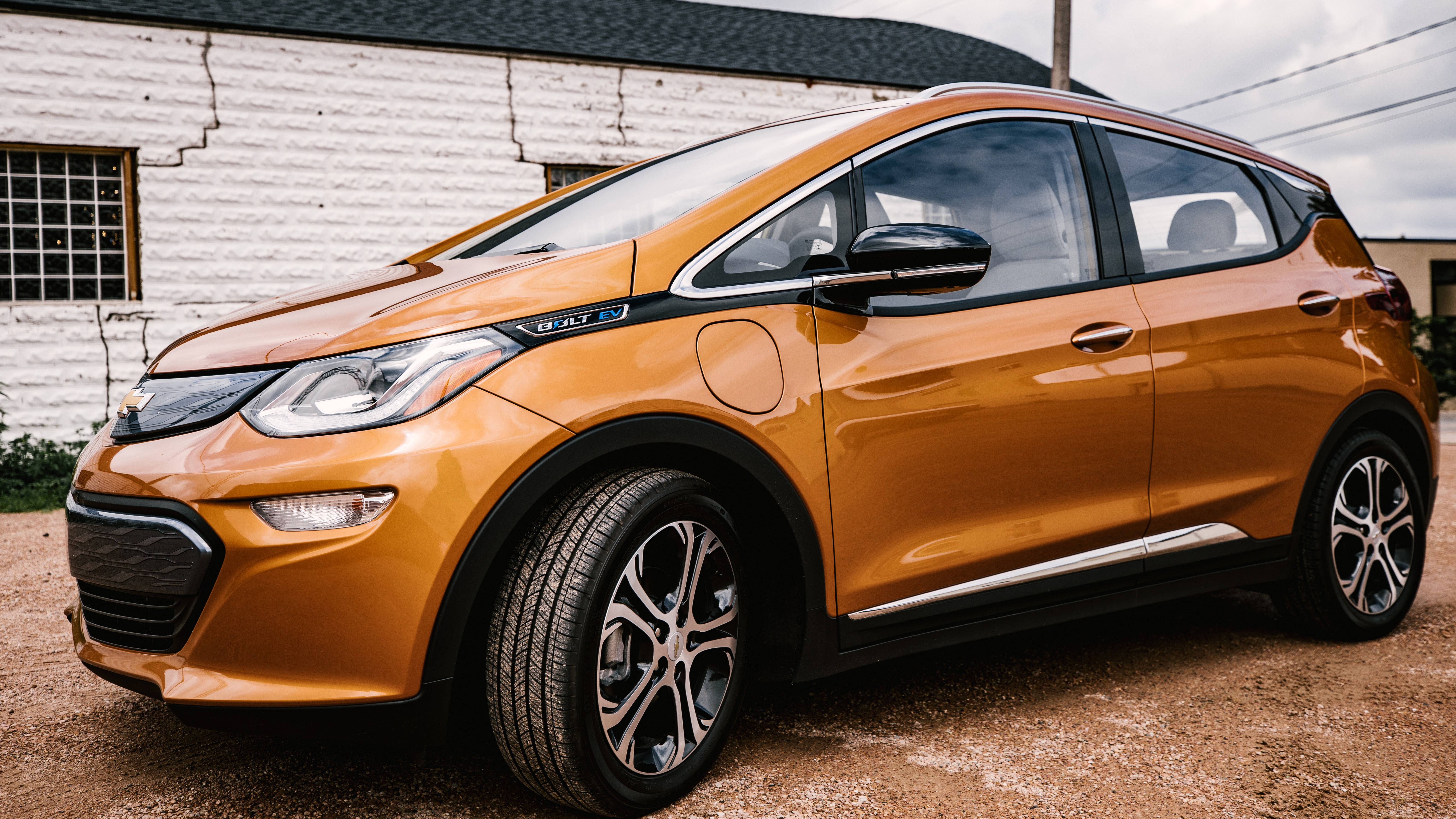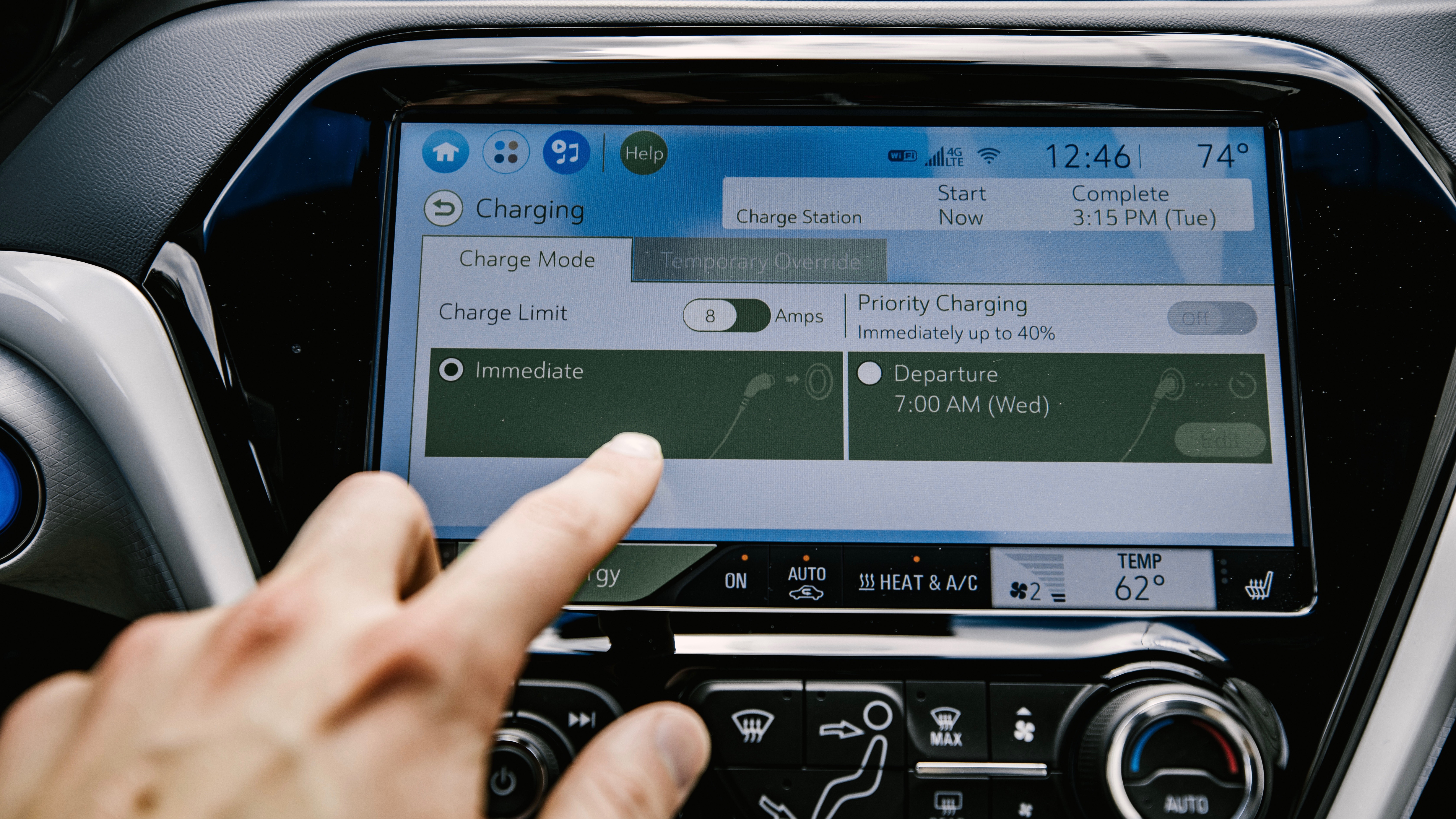Watching your speed in the 2018 Chevy Bolt EV is not that easy
An electric car that drives like a 'real' car

Photo credit: Josiah Bondy
One of the fastest cars around does not actually have a gas engine.
Before you scoff at this idea and dismiss it entirely, you should know that the 2018 Chevy Bolt EV is quite speedy for what it is – an all-electric car that’s meant to save the planet and move you around the planet at the same time, without feeling like you’re in a golf cart.
In a recent test, the touchscreen displays, a mobile apps, and the display above the steering wheel – all with hints of an Apple iPad – help you monitor all of that sporty driving.

Now, here’s a major caveat. No, it’s not a Chevy Corvette.
The interesting physics lesson you get with the Bolt is that the car doesn't need to shift through gears, so during our tests the electric motor would provide full power even from the starting block, accelerating much faster than we expected – to the point where the wheels would spin out a little.
In traffic, you can merge much faster than most of the original electric cars including the Nissan Leaf, but without the radical abandon of a fully equipped Tesla Model S.
Sign up for breaking news, reviews, opinion, top tech deals, and more.

This is not the main reason to own the car, but it proved to be an interesting dichotomy.
Just because you can drive surprisingly fast, punching it at every stop sign, doesn’t mean you should. And, those display are there to help you monitor the EV range.
In the instrument cluster, you can watch a small leaf move up or down, depending on how you are driving. In the main display, you can set options for delaying charging for when it's cheaper for your utility, and tweak an amperage setting (12 amps worked fine for us in all tests).
"The Bolt EV features several energy usage screens, including an energy details screen and a screen which displays the drivers energy usage score,” says Kathy Beslic, the Chevy Bolt spokesperson.
“The energy details screen breaks down percent of energy used for driving, climate controls and battery conditioning. The energy usage score provides an index for your driving technique, terrain, climate settings and outside temperature.”

Indeed, as you drive, you can see the difference in real-time. Crank up the air conditioning, and you will see the digital display for EV range drop a few miles.
On several commutes, disabling all climate control settings and opening the windows meant about five miles of extra range. Rated for 238 miles, the Bolt easily matched that spec on all of our test runs.
And, there are two main features to help you manage your need for speed with your need to make it into work with enough range.
We used the Low gear setting – it’s a bit of a misnomer, since there aren’t any gears. It works a bit like the E-Pedal in a Nissan Leaf in that the Bolt will slow down more aggressively when you lift your foot off the accelerator. (It’s known as one pedal driving, since you don’t need to use the brakes.)
Another option, called Regen on Demand, does roughly the same thing – except you use a paddle by the steering wheel to slow the car down. They both add more range by generating more power for the car.

You might not like them if you’re passionate about driving, however. They force the Bolt to operate without as much zip, and adds some range.
Then again, if you do drive fast and keep an eye on the displays, looking at the range indicator, you will be happy to have these extra options available if you need to squeak out some more juice.
Overall, the Bolt provides the best of both worlds – faster and sportier than any Toyota Prius for sure, sporty enough to burn rubber, yet able to last long enough on a charge. The car costs $37,495 (or $29,995 after a tax credit). It’s a thrill ride for penny pinchers.
Take a closer look at the 2018 Chevy Bolt in the gallery below:






On The Road is TechRadar's regular look at the futuristic tech in today's hottest cars. John Brandon, a journalist who's been writing about cars for 12 years, puts a new car and its cutting-edge tech through the paces every week. One goal: To find out which new technologies will lead us to fully driverless cars.

John Brandon has covered gadgets and cars for the past 12 years having published over 12,000 articles and tested nearly 8,000 products. He's nothing if not prolific. Before starting his writing career, he led an Information Design practice at a large consumer electronics retailer in the US. His hobbies include deep sea exploration, complaining about the weather, and engineering a vast multiverse conspiracy.